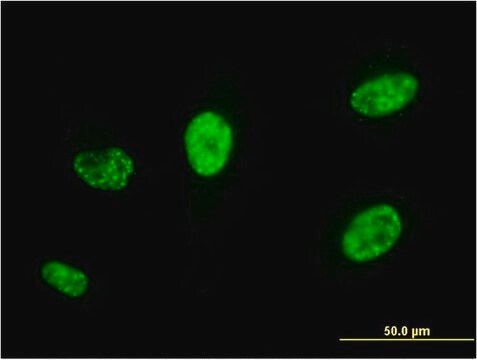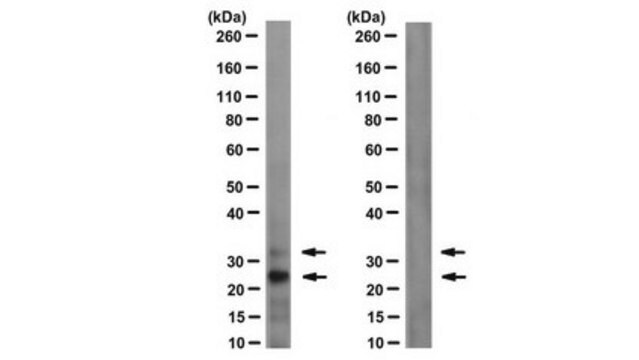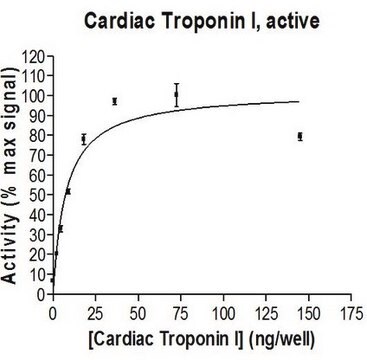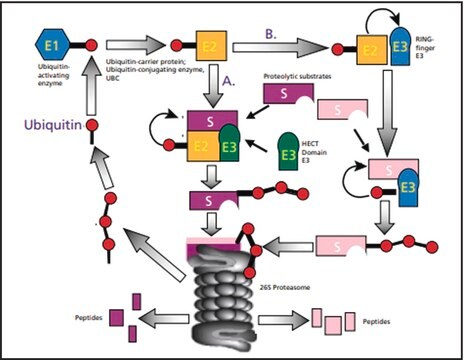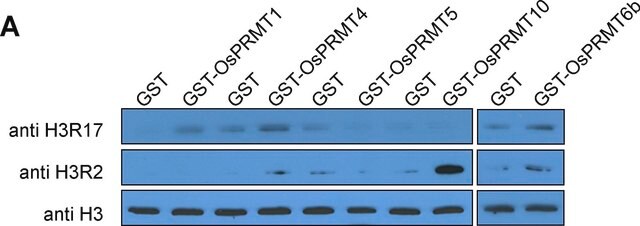05-678
Anti-ubiquityl-Histone H2A Antibody, clone E6C5
clone E6C5, Upstate®, from mouse
Sinônimo(s):
H2AUb, Histone H2A (ubiquityl), H2A histone family, member R, histone 1, H2aa, histone H2A, histone cluster 1, H2aa, H2AK119Ub1
About This Item
Produtos recomendados
fonte biológica
mouse
Nível de qualidade
forma do anticorpo
purified antibody
tipo de produto de anticorpo
primary antibodies
clone
E6C5, monoclonal
reatividade de espécies
amphibian, mouse, human, frog, rat, monkey
fabricante/nome comercial
Upstate®
técnica(s)
ChIP: suitable
immunocytochemistry: suitable
western blot: suitable
Isotipo
IgM
nº de adesão NCBI
nº de adesão UniProt
Condições de expedição
dry ice
modificação pós-traducional do alvo
unmodified
Informações sobre genes
frog ... H2Ac1(594915)
human ... H2AC1(221613)
mouse ... H2Ac1(319163)
rat ... H2Ac1(24828)
Descrição geral
Especificidade
Imunogênio
Aplicação
This antibody has been reported by an independent laboratory to detect ubiquityl-Histone H2A in cells fixed with either 3% formaldehyde/0.1% Triton X-100 or methanol (Vassilev, A. 1995).
Chromatin Immunoprecipitation:
Reported by an independent laboratory (Wang, H. 2004).
Epigenetics & Nuclear Function
Histones
Qualidade
Western Blot Analysis:
A 1:500-1:2000 dilution of this lot detected ubiquityl-Histone H2A in acid extracts from HeLa and 10T1/2 cells.
Descrição-alvo
forma física
Armazenamento e estabilidade
Nota de análise
Acid extracts of HeLa cells.
Outras notas
Informações legais
Exoneração de responsabilidade
Não está encontrando o produto certo?
Experimente o nosso Ferramenta de seleção de produtos.
Código de classe de armazenamento
12 - Non Combustible Liquids
Classe de risco de água (WGK)
WGK 2
Ponto de fulgor (°F)
Not applicable
Ponto de fulgor (°C)
Not applicable
Certificados de análise (COA)
Busque Certificados de análise (COA) digitando o Número do Lote do produto. Os números de lote e remessa podem ser encontrados no rótulo de um produto após a palavra “Lot” ou “Batch”.
Já possui este produto?
Encontre a documentação dos produtos que você adquiriu recentemente na biblioteca de documentos.
Nossa equipe de cientistas tem experiência em todas as áreas de pesquisa, incluindo Life Sciences, ciência de materiais, síntese química, cromatografia, química analítica e muitas outras.
Entre em contato com a assistência técnica

